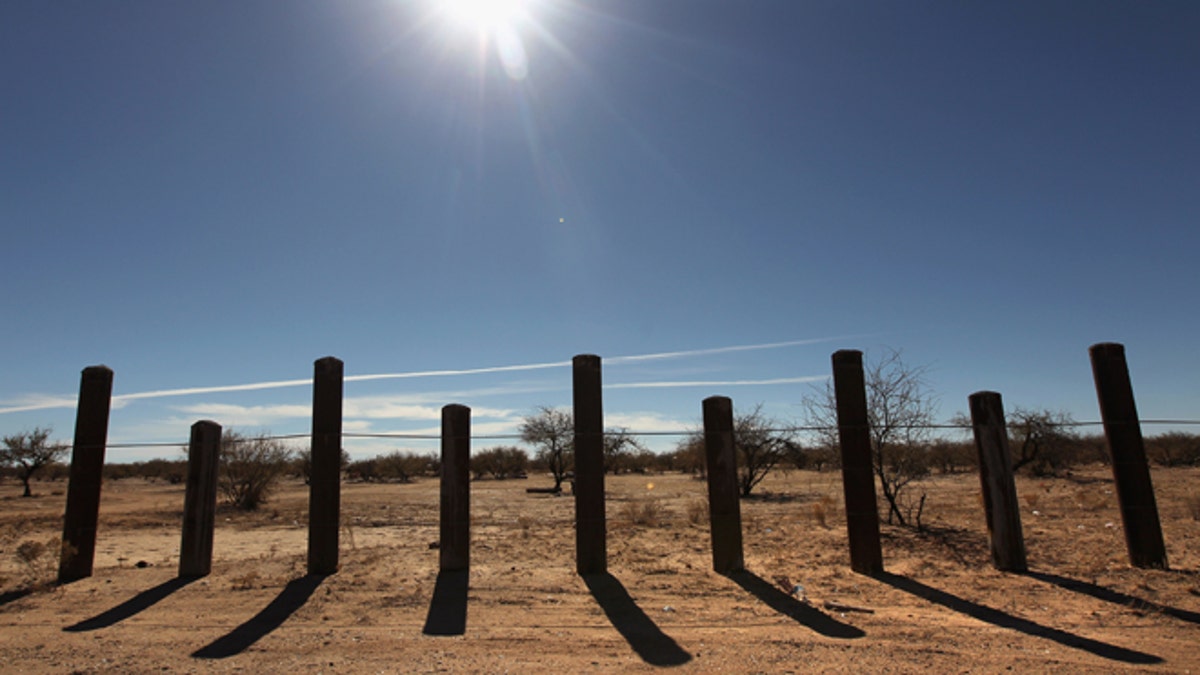
The U.S. Mexico border on the Sonoran Desert on January 18, 2011 in the Tohono O'odham Nation, Arizona. (Getty)
Before lines were drawn and wars were fought, indigenous tribes like the Tohono O’odham Nation lived on both sides of what is now the U.S.-Mexico border.
For many in the O’odham Nation, located in the Sonora Desert of southern Arizona, the idea of a wall cutting through their land is unthinkable.
President-elect Donald Trump's proposed "big, beautiful wall," they say, will open a 75-mile-wide gap straight through the middle of their tribal lands.
“Over my dead body will a wall be built. I don’t wish to die, but I wish to work together with people so we can protect, truly protect, the homeland of this place they call the United States of America,” said Vice Chairman Verlon Jose of the O’odham Nation in an interview with radio station KJZZ 91.5. “Not only for my people, but for the American people.”
The O’odham Nation is a federally recognized tribe with 33,000 members and more than 2.7 million acres of land – about the size of Connecticut.
For thousands of years, the O’odham people have lived on an expansive swath of land in the southwest, in what the Department of Homeland Security calls the Tucson Sector — 262 miles of border stretching from New Mexico almost entirely across Arizona. It's one of the busiest areas for both “illegal alien apprehensions and marijuana seizures,” according to the O'odham Nation website.
Robert Holden, deputy director of the National Congress of American Indians, told Intercontinental Cry that the O’odham Nation isn’t the only tribe that would be affected by Trump’s proposed wall. Both the Ysleta del Sur nation in Texas as well as some in California, such as the Kumeyaay, have tribal members in Mexico.
In the 18th century, O’odham land fell under Mexican rule until 1853, when it was divided in half between the U.S. and Mexico by the Gadsden Purchase.
In 2006, as a consequence of the Secure Fence Act, waist-high metal posts were built along the border through the O’odham Nation, checkpoints were added and U.S. Border Patrol agents started driving through their land.
Today, the O’odham regularly cross the border for traditions related to their religion, economy and culture.
Border Patrol agents often stop tribal members, and tribal members report the confiscation of religious items necessary to their customs. They also claim that there have been deportations and detrainments for crossing the U.S.-Mexico border.
O’odham members, like all U.S. citizens, must present passports or identification cards any time they enter the U.S.
Federal law requires the Bureau of Land Management to consult with tribal governments before making any changes to land use.
The O’odham Nation is currently recognized by law as an autonomous tribal government, according to the Washington Post.
Tribal members insist that a wall cannot be built without their consent and say that the federal government will need to appeal to Congress to provide a special exemption to the law.
